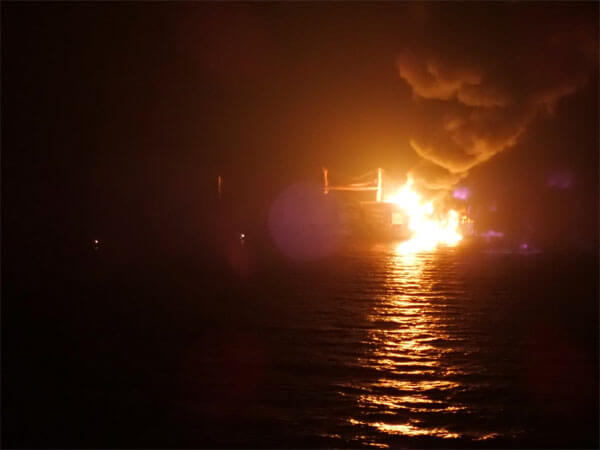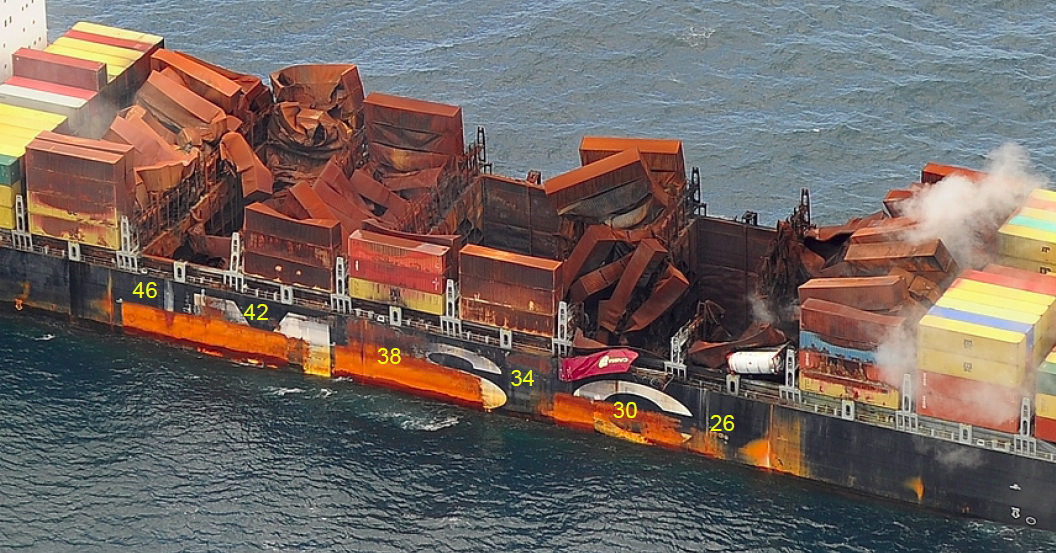TT Club: Dangerous Goods Shippers Still Need to Work on Fire Safety
TT Club continues to raise the alarm about the unresolved hazards of cargo fires, a perennial problem in container shipping. The club estimates that a serious box fire happens every 60 days, as illustrated by the recent blazes aboard the TSS Pearl and the Zim Charleston. The shoreside root causes are well-known, and shippers can even be held liable in court for damages if they don't follow best practices for packaging and declaration - but getting compliance from dangerous-goods shippers is still a challenge, according to TT Club.

FIre aboard the TSS Pearl, October 2022
“There were significant lessons coming from the sad incident on the MSC Flaminia, which cost the lives of three seafarers, particularly from the subsequent legal proceedings that adjudged the shipper and NVOC responsible for root cause errors,” says TT’s Peregrine Storrs-Fox. “Despite the biennial updates to the IMDG Code, including multiple arising from this particular incident, the judge’s assessment that the regulations merely set the ‘baseline’ for good practice remains utterly true today.”
On July 14, 2012, as the MSC Flaminia was under way from New Orleans to Antwerp, a cloud of smoke began emerging from Hold 4. When a seven-man team went forward to prepare firehoses alongside the hatch, an explosion occurred. Three crewmembers were killed, two were severely injured, the vessel was damaged, and most of the cargo containers aft of Hold 4 were destroyed. The post-accident investigation determined that the fire started in tanks of a self-heating chemical which had been left in the sun for 10 days before loading. The court held the chemical manufacturer and their NVOCC solely responsible for the casualty - not the shipowner or the operator.

Fire damage aboard the MSC Flaminia (USCG)
According to TT Club, the judgment in the MSC Flaminia case made clear that courts see cargo safety regulations merely as a baseline. “This is an important statement to which any entity inclined to rely solely on the letter of the law when consigning dangerous goods, would do very well to pay heed,” said Storrs-Fox.
Legal incentives aside, the challenge is in getting everyone involved in the shipping value chain on board with proper handling. Shipper errors, intentional misdeclaration, poor cargo packing and careless handling may determine whether a dangerous goods shipment is prepped for delivery or set up for a disaster. Manufacturers, cargo owners, packers, forwarders, terminal operators and ocean carriers all play a role in the safety of the consignment.

that matters most
Get the latest maritime news delivered to your inbox daily.
“The complexities of the global container trades increase rather than diminish,” concludes Storrs-Fox. “No one entity can surmount the dangers of these horrific fires, as a consequence it is essential that the entirety of the risk faced should be embraced by all involved through the supply chain if they are to be successfully reduced.”
TT Club is running multiple best-practice outreach initiatives to help raise awareness, including updates to industry-standard publications on packing dangerous-goods shipments. It also hosts an annual Innovation in Safety Award forum to highlight the biggest contributions to container safety each year. The 2021 award went to the HydroPen system, the simple container-penetrating firefighting lance that fits on the end of a fire hose. It can reach up to 35 feet, and once it is activated, the crew can vacate the area for safety. It is in fleetwide use with CMA CGM and Maersk, among others.
